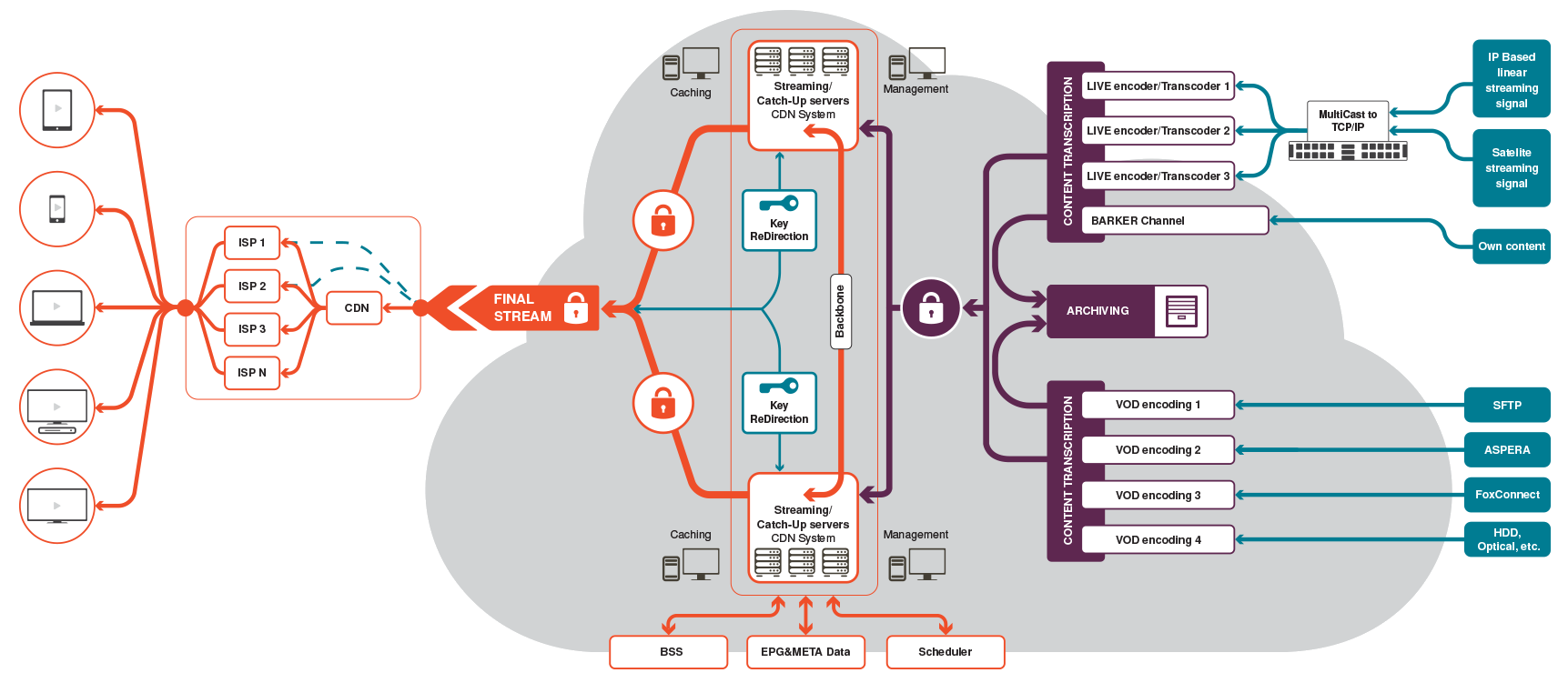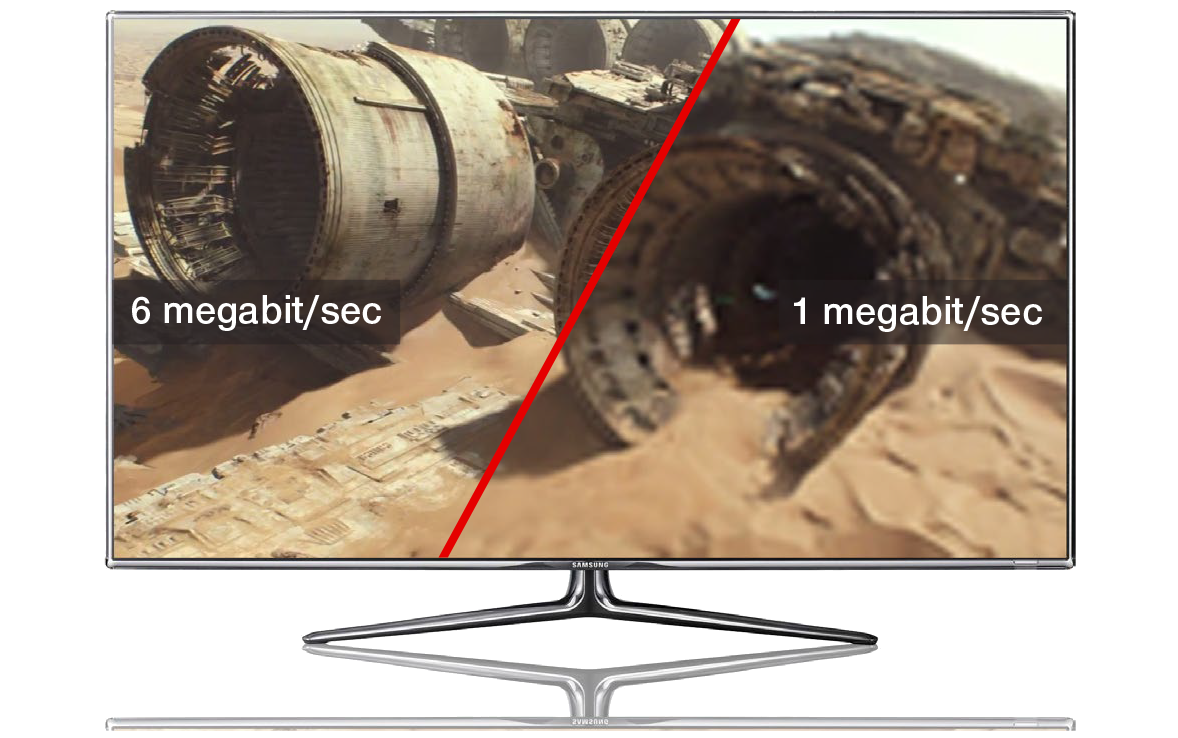Streaming solutions
How does streaming work?
The management of a streaming platform not only requires technical skills and appropriate infrastructure, it is a lot more:
Our company's simplified live TV and VOD streaming architecture:

DRM technology
Is applied, once the multi - bitrate codifying levels are ready to use for the adaptive streaming. Our solution asks automatically for the DRM keys and assigns them to the corresponding content.Applied DRM encryptions:
SmoothStreaming container with PlayReady DRM:
for IE browsers and Google ChromeCast
MPEG - DASH container with Widevine Modular DRM:
for Android / Chrome browsers and for MS Edge (with PlayReady DRM)
In home developed. WVM container with Widevine classic DRM:
unique implementation for IOS clients and for former Andoid clients
HLS container with Fairplay DRM:
for all Apple products
At the end of the process, the content uploads to the authenticated and tested servers, on the other hand the media is saved to the LTO6 data cartridge.
Quality
STABILITYAs the live streamings cannot be downloaded in advance, they are quite sensitive to the network's speed changes.
In order to solve these difficulties, we use an adaptive streaming system. Besides the 720p default quality level, there are other lower quality levels as well (540p, 360p, 270p).
When the user's network slows down, the player switches temporarily to a lower quality level, in order to secure the continuous playing.
QUALITY
Our recommended resolution for online streaming would be 720p, furthermore a 1080p FullHD is achievable with a higher bit rate.
Quality levels:
270p: 480x270 and 572kbps - for extremely slow mobile connections
360p: 640x360 and 872kbps - small display version
540p: 960x540 and 1872kbps - for the best quality SD streaming
720p: 1280x720 and 3472kbps - high resolution with good data transmission
1080p: 1920x1080p and 6472 kbps - high quality


